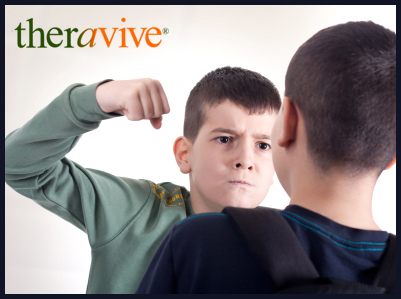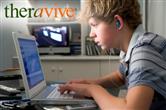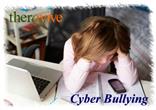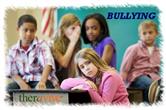February 25th. Anti-Bullying Day in Canada has been coined "Pink Shirt Day". Throughout many communities in Canada yesterday people saw pink! From the Starbucks Barista to the bank teller, the country took a stand against bullying. Mostly, the emphasis on bullying and its effects was directed toward the bullying that takes place in schoolyards.
[More]
December 14, 2014
by Marti Wormuth, MA

Bullying is something that has been in the news a lot more often as of late. With the internet, it has become much more difficult for us to figure out whether or not our child(ren) are getting bullied at school or on the internet. So what can we do in order to make sure that our children are kept safe? How can we help our children to learn that they are worthwhile so that they can live the lives that they deserve to have?
[More]
Whatever the cause of a bully’s behavior, victims are not responsible for it. Employers are responsible for ensuring that work environments are safe and healthy for all employees. Victims must understand that they cannot change the bully, and must take steps to protect themselves. Being a victim of workplace bullying can be a traumatic experience, impacting the victim’s emotional and physical health, as well as relationships.
[More]
Hazing is a widespread problem impacting not only colleges and universities, but high schools, as well. Rites of passage and initiation rituals are nothing new, but some of the hazing that goes on is devastating for victims and their families, and even illegal. Both victims and those participating in perpetrating the hazing can experience significant psychological effects including trauma reactions and shame and guilt. Joining any group, team, or club should not mean sacrificing your physical or psychological health and well-being.
[More]
January 30, 2014
by Christie Hunter

Cyber Bullies come in all shapes and sizes, and they also target both adults and children. Why they do it, and who.
[More]
October 28, 2013
by Ashley Marie

October is Domestic Violence Awareness Month. It was a typical Thursday. I was tucked away in my room and.....
[More]
September 21, 2013
by Christie Hunter

A parent's deepest fears exposed. The Peeping Tom no longer needs to sneak outside our windows, he is IN them. There is something we can do to keep them out and our children's dignity and virtue safe from on-line harm.
[More]
August 30, 2013
by Cindy Marie Hosszu

Back to School Series:
Technology and the internet have changed how we communicate, how we learn, and how we take care of business. It has given us new ways to create, and experience the world around us. Unfortunately, some of the ways we have used technology to evolve are very negative. In the 2008/2009 school year, 20% of students experienced bullying by electronic means, and 28% experienced threat of violence through electronic means. [1] To protect our kids, we must be aware of cyberbulling, and how to prevent it.
What Is Cyberbullying
Cyberbullying is aggressive behavior that is unwanted, repeated, and involves a real or perceived imbalance in power that takes place on electronic devices or media, such as computers, cell phones, social media sites, text messages, chat, web sites, and online gaming. It is bullying between children, not adults. When adults get involved it becomes cyber-harassment, cyber-stalking, or sexual predator behavior.
How Is Cyberbullying Different Than Traditional Bullying
24/7- Cyberbullying can happen any time day or night. Although most cyberbullying is accompanied by in-person bullying, it is harder to avoid because it is not something you can remove or avoid.
Anonymously- Cyberbullying can be posted and distributed very quickly to a large audience, and can be hard or impossible to trace.
Permanent- Once something has been posted on the internet, it is difficult to have it removed.
By Proxy- Cyberbulling can be direct, or by proxy. Anyone can create a profile of the person being targeted to impersonate them and incite others. Others can then use bullying behavior because they think that the target started the behavior. It can be used as a means of punishment from parents, other kids, and even other groups. An example of cyberbullying that involves other groups is when someone posts on hate or sex sites and gives out personal contact information about the target.
Effects of Cyberbullying
Just like traditional bullying,(You can learn more about traditional bullying) kids who are cyberbullied are more likely to use alcohol and drugs, skip school, experience in-person bullying, are often unwilling to attend school, receive poor grades, have low self-esteem, and have more health problems.[2]
Prevent Cyberbullying
Parents and kids can work together to prevent cyberbulling by keeping lines of communication open.
Talk to kids about what cyberbullying is and what to do if they see it.
Establish rules about computer use, and keep the computer in an area of the house that has high visibility.
Make rules with regard to device use so that parents are able to view all online activity and texts at any time. Reassure kids that, as a responsible parent, it is about safety, not invading their privacy. Installing software to monitor online behavior is helpful, but not as effective as monitoring personally.
Know the sites your child visits, who they are with and what they do online.
Follow your kids on social media, and get a feel for the web sites they use.
Teach kids about online safety, such as what to post and how someone may perceive their posts and activities. Only “friend” real friends. Teach them how to know who can see and how to control who can see their posts and activities. Never share user-names, passwords, or location on any web sites.
What To Do If You See Cyberbullying
Never respond to or forward cyberbullying, but do keep any evidence of cyberbullying. Be sure to capture dates, times, and descriptions of cyberbullying by printing screenshots, email or text messages. You can use this record to report to the proper channels.
Block the person doing the cyberbullying.
Look for terms of service for the media, and follow their instruction for reporting so that they can take action.
Report cyberbullying to law enforcement whenever there are threats of violence, child pornography, or explicit messages or photos, stalking, or hate crimes, or if a picture is posted of someone in a place that they would expect to be private.
Let schools know about the bullying. Often times, schools cannot take action directly, but they can help by being aware of the situation. Also, some states require that schools have anti-bullying policies included in the schools handbooks so that it is contractual, and they can take action.
Counseling can help both parents and kids with the stress of cyberbullying.
[1] "Student Victimization in Schools." National Center for Education Statistics (NCES) Home Page, a part of the U.S. Department of Education. Institute of Education Sciences, Nov. 2011. Web. 4 Aug. 2013.
[2] "What is Cyberbullying | StopBullying.gov." Home | StopBullying.gov. N.p., n.d. Web. 4 Aug. 2013.
[3] http://www.dosomething.org/tipsandtools/11-facts-about-cyber-bullying
August 30, 2013
by Cindy Marie Hosszu

Back to School Series:
Bullying and being bullied is not a part of growing up. Bullying is not “kids being kids.” Being bullied is not a rite of passage. Over time, psychologists have come to understand just how damaging bullying behaviors can be to children, and into adulthood.
Kids who are bullied are more likely to experience depression, anxiety, sadness, loneliness, changes in sleep and eating patterns, loss of interest in activities previously enjoyed, health complaints, and decreased academic achievement. A small percentage of those bullied may retaliate in violent ways. Twelve of fifteen school shooting cases in the 1990’s involve those who had a history of being bullied.
Kids who bully others can have troubles such as adolescent alcohol and drug abuse, vandalism, fights, drop out of school, engage in early sexual activity, criminal convictions, and can be abusive toward partners, spouses, or children later in life.
Even those who witness bullying can suffer consequences such as use of tobacco, alcohol, and drugs, increased mental health problems such as depression and anxiety, and missed school.
What is Bullying?
Bullying is unwanted aggression that encompasses an imbalance of power, and is repeated over time.[1] It can happen anywhere, and at any time. Whether it is before, during, or after school, the playground, in transit to school, or even on the internet, it affects the person being bullied, the person engaging in bullying, and those who witness the behaviors. In 2011, 20% of 9-12 grade students were bullied nationwide. [2]
Types of Bullying
Verbal - Teasing, name-calling, inappropriate sexual comments, taunting, and threats to cause harm.
Social Bullying - Purposely excluding, encouraging others to exclude, rumors, and public embarrassment.
Physical Bullying - Hitting, spitting, tripping, taking or breaking another’s things, mean or rude hand gestures.
Kids Who Use Bullying Behavior
Risk – Although there is no consistent distinction for people who use bullying behaviors, some of the characteristics that are observed most in those who use bullying is that they tend to be well connected to peers, have social power, or are overly concerned with popularity. They tend to dominate or take charge of others. They can be aggressive, competitive, and easily frustrated, have less parental involvement, or issues at home. They have difficulty following rules, view violence in a positive way, think badly of others, and have friends who bully. They are not stronger physically, but have power over those they bully.
Warning Signs - Those who use bullying behavior may get into physical or verbal fights. They are increasingly aggressive, and may get sent to the principal’s office or detention frequently. You may notice they have friends who bully others. You may notice unexplained belongings or money, and they tend to blame others for their problems, and don’t take responsibility for their actions.
Support - While it is important not to call the person a bully, the child needs to understand that bullying behavior is wrong. Calling one a bully implies that the behavior cannot be changed, and it also fails to recognize that kids can be more than just a bully. They could have been bullied, or witnessed bullying also. While addressing bullying, model respectful behavior, because children learn by example. It is important to show kids that bullying will not be tolerated. Work with the child to understand some of the reasons they are bullying. It can be to fit in, or because they are acting out. Use consequences to teach how bullying is wrong, and build empathy to help prevent future bullying. Talk about what it is to be a good friend, the benefits of teamwork, the importance of respecting others. A project such as Civil Rights and Bullying is an example of a consequence that will build empathy. Involving the child in making amends, such as writing an apology letter, can help the child reflect on how their actions affected another.
Avoid the “Three strikes, you’re out” response, and suspending. They do not reduce the behaviors. Conflict resolution and peer mediation also do not work. It is not a conflict between people of equal power who share equal blame. Group treatment for students who bully does not work because group members tend to reinforce bullying behavior.
Remember to stay involved. Continue to encourage behavior that affects people in a positive way.
Kids Who Are Bullied
Risk – Kids who are bullied need help learning how to respond to being bullied. Like those who bully, there is no specific set of characteristics that describes who is at risk, but they are often perceived as different. They may be overweight, underweight, have different styles, or social standing. They are perceived as weak or unable to defend themselves. They can be depressed, anxious or have low self-esteem. They are usually less popular, or have fewer friends. They do not always get along with others, and may seem “annoying” or attention seeking as they struggle to fit in.
Warning Signs – Sometimes there are no warning signs, and kids do not like to talk about their situation. Some things to look for are changes in the child such as unexplainable injuries, lost or broken belongings, and frequent illness. You may notice changes in eating habits such as not eating, or being very hungry when they get home from school because they did not eat their lunch. They may not want to go to school and have declining grades, loss of interests, loss of friends, and want to avoid social situations. You may notice feelings of helplessness, decreased self-esteem, or self-destructive behaviors.
Support – Listen and focus on the child. Learn what is going on, and show you want to help. Assure the child that bullying is not their fault. Because they may struggle to talk about it with parents, seeking a therapist or councilor may be valuable. Use role play to help give the child way to deal with bullying. Work with the school, and make a game plan and find out what will help the child feel safe. Minimize changes to routine, so that the child is not singled out. If seating changes are necessary, make the change for everyone.
Never tell the child to ignore the bullying. Do not blame the child for being bullied. They did not provoke or deserve the aggressive behavior. Do not tell the child to fight back. Parents should resist the urge to contact other parents because it could make matters worse. Bullying is repetitive behavior, so be persistent and keep informed on the situation.
Witnesses
Those who assist do not start the bullying, but they encourage, or join in at times. Kids who reinforce are not directly involved, but give audience by laughing or encouraging the bullying behavior. Outsiders are kids who remain separate from the bullying and do not either engage or stop it. They often want to help, but do not know what to do. Kids who defend will comfort the child being bullied and may come to the child’s defense.
Prevent Bullying
Talk to kids about bullying. Encourage kids to do what they love. Help kids understand what bullying is and that it is not acceptable. Be a model of kindness and respect. Encourage kids to speak to a trusted adult if they are being bullied, or see others being bullied. Talk about how to stand up to kids who bully such as using humor, or saying “stop” directly and confidently. Talk about actions that don’t work like walking away. Discuss strategies for staying safe such as staying near adults or groups of other kids. Urge them to help kids who are bullied by showing kindness or getting help.
Getting Help
There are times when Bullying can get to a point where depression or stress has set in and a child will benefit from counseling. It may be helpful for the child to talk through the feelings they experiences as well as learn new skills such as assertiveness or self-esteem. Family counseling can also help as this can help to strengthen the child's sense of support, can open lines of communication and increase cohesiveness in a family.
___________________________________________________________________________________________________________
[1] "APA Resolution on Bullying Among Children and Youth." American Psychological Association (APA), July 2004. Web. 20 July 2013.
[2] "Bullying: What You Need to Know | StopBullying.gov." Home | StopBullying.gov. n.d. Web. 20 July 2013.
[3] http://www.dosomething.org/tipsandtools/11-facts-about-school-bullying
August 19, 2013
by Ashley Marie

Bullying is a concern for parents, teachers, and children. And this challenge is becoming evermore complex as traditional bullying behaviours are taking new forms on the Internet.
School will be in session again.
Mothers are scanning flyers from department stores to snatch the latest deal on school supplies. Fathers are planning their morning and afternoon pick-up and drop-off schedules. Girls are picking out their outfit for the first day of school. Boys are gearing up for soccer tryouts.
And bullies are cracking their knuckles.
Bullying is no small challenge, and its harmful effects span across North America.
As discussed in the news this past week, Rehtaeh Parsons, a high school student in Nova Scotia, attempted suicide and passed away this year after a series of incidents of cyber bullying. The perpetrators distributed multiple photos of her online and physically raped her.
In Canada, 1 in 3 students are bullied during the academic year.[1] Sadly, of 35 countries that were studied internationally, Canada had the 9th highest rate of bullying for students at the age of 13.
In the United States, bullying has increased over the last decade.[2] Researchers estimate that 1 in 5 students are bullied over the course of an academic year, and 8% of students report to have bullied others.
Bullying Defined
Bullying involves a perpetrator who intends to harm its victim(s) emotionally and/or physically.[3] Moreover, it includes repeated incidents of emotional and/or physical aggression and is characterized by a power imbalance between two or more individuals.
According to the Canadian Council on Learning, bullying can be broken down into four broad categories: (1) physical bullying, (2) relational bullying, (3) verbal bullying, and (4) electronic bullying.[4] The last of these is a recent phenomenon that is becoming evermore dominant.
Cyber Bullying
Cyber bullying involves online forms of aggression, such as forwarding private photos or information of the victim or writing malicious comments directed at the victim on social networking sites.
Typically, there are more female than male victims of cyber bullying.
In Canada, 73% of victims of cyber bullying reported receiving aggressive emails or instant messages.[5]
In the United States, 1 in 5 teenagers has been cyber bullied and approximately the same number of teenagers have been a cyber bully.[6] Studies show that there is frequently a relationship between online and in-person bullying. Cyber bullying tends to contribute to social exclusion for female victims and tends to result in physical bullying for male victims.
It Often Starts At Home
Researchers have found that the issues that trigger bullying often stem from family dynamics at home.[7] Parents who do not provide a caring environment can harmfully affect their children, who in turn express their discontentment at school. Once the pain of life at home reaches a breaking point, children are more likely to act aggressively towards others.
It Usually Happens at School
Though the triggers that produce bullying behaviour tend to begin at home, the act of bullying typically occurs at school. Studies show that bullying occurs most prominently during recess and in the classroom.[8] Children commonly find their social life at school, so incidents of bullying are more likely to occur on school grounds.
In addition, bullies commonly seek a wider audience to which they can display their power over another. This is especially the case when teachers or supervisors are not present. For instance, schoolyards often lack sufficient supervision, making it easier for bullies to act aggressively towards their victim(s) without any punishment.
How Parents Can Help a Victim of Bullying
Though children do not always tell an adult about incidents of bullying, those who do tend to turn to their parents for help. In fact, 1 in 3 children turn to their mother or father.[9] This is a great time to asses how life for your child is in general- how is their self esteem etc. A Family Counselor can help to assist in communication with your children and working through issues you may not feel confident tackling.
But for those parents whose children have remained silent, these are some warning signs to look out for: unexplained scratches or bruises, unexplained damaged belongings, fear of walking to school or home from school, unpredictable mood swings, anxiety, poor academic performance, and having few friends.
How Parents Can Help a Perpetrator of Bullying
Once an incident of bullying has been identified, the family of the perpetrator of bullying should be notified. Because bullies commonly grow up in dysfunctional families, researchers recommend that schools involve their parents in the process of preventing future incidents of bullying. When parents must commit to actively helping their child, the positive result can be more sustainable in the long run. There are lots of stresses for Parents with back-to-school coming, to get some perspective on this read more here.
Increasing Awareness About Cyber Bullying
In the digital age that we live in, it is also important to help children navigate online social interactions. Social media sites and online forums are often the arena in which modern forms of bullying take place. Parents and teachers can educate children about proper online etiquette and inappropriate behavior. If the triggers of bullying behavior are stopped at home and in the classroom, then we can help decrease incidents of bullying overall.
[1] Canadian Bullying Statistics. 2012. Canadian Institutes of Health Research. [online] Available at: <http://www.cihr-irsc.gc.ca/e/45838.html>
[2] Bullying and Adolescent Health. 2011. Office of Adolescent Health. [online] Available at: <http://www.hhs.gov/ash/oah/news/e-updates/eupdate-7.html>
[3] Bullying in Canada. 2008. Canadian Council on Learning. [online] Available at: <http://www.ccl-cca.ca/pdfs/LessonsInLearning/Mar-20-08-Bullying-in-Canad.pdf>
[4] Ibid.
[5] Canadian Bullying Statistics. 2012. Canadian Institutes of Health Research. [online] Available at: <http://www.cihr-irsc.gc.ca/e/45838.html>
[6] Bullying and Adolescent Health. 2011. Office of Adolescent Health. [online] Available at: <http://www.hhs.gov/ash/oah/news/e-updates/eupdate-7.html>
[7] Rigby, K. 2007. Bullying in Schools and What to Do About It. Victoria, Australia: Acer Press.
[8] Ibid.
[9] Ibid.